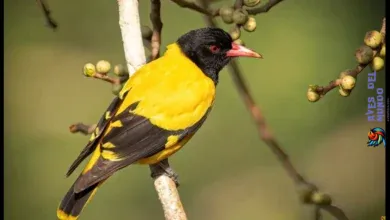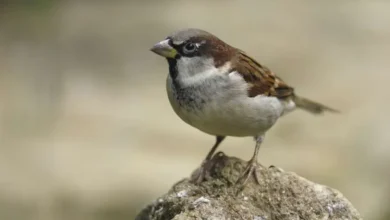Have you ever wondered how to help owlets grow and thrive in their natural habitat? As these adorable baby owls embark on their journey in the world, they rely on our care and support to ensure their safety and overall well-being. In this section, we will provide you with essential tips on how to care for owlets and create an environment conducive to their thriving. Are you ready to discover the secrets to nurturing owl families and contributing to owl conservation? Let’s dive in!

Understanding Owl Species and Behavior
Owls are fascinating creatures that come in various species, each with its own unique behavior and characteristics. By understanding the behavior of different owl species, particularly when it comes to owlets, we can better care for and support the thriving of owl families.
Let’s take a closer look at some of the most common owl species and their behavior:
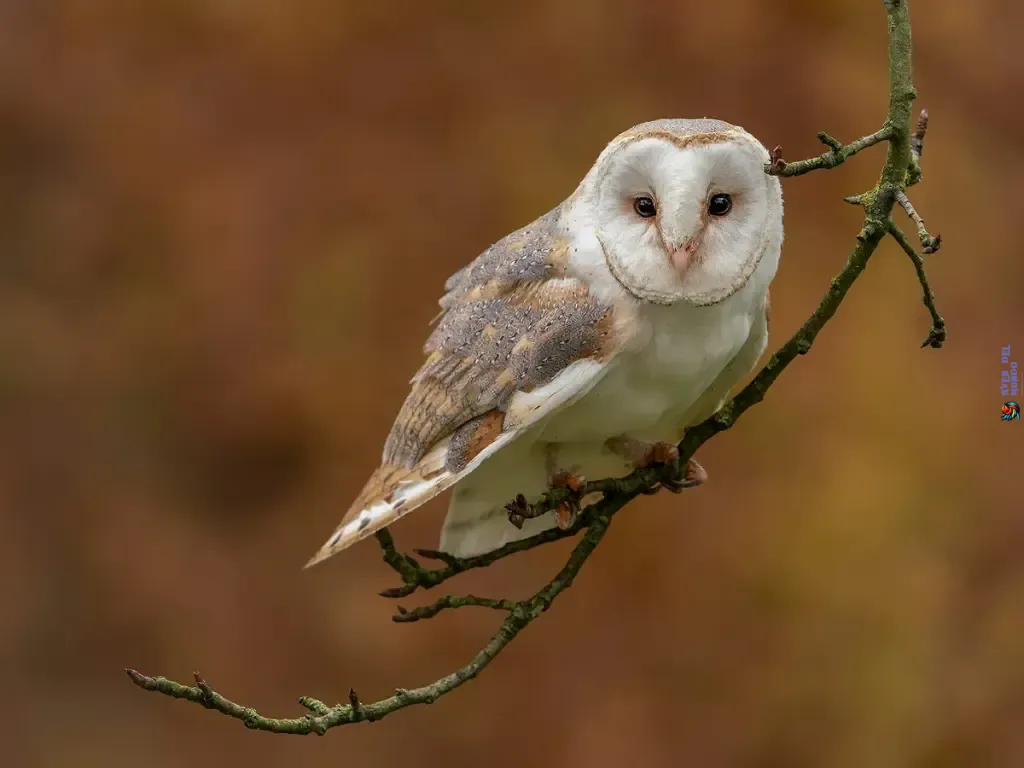
Barn Owl
The Barn Owl is recognized for its heart-shaped face and beautiful pale plumage. These owls are nocturnal hunters with exceptional hearing, enabling them to locate prey in complete darkness.
Barn Owls primarily feed on rodents, making them valuable assets in controlling rodent populations. They nest in cavities like barns, which is how they acquired their name.

Great Horned Owl
The Great Horned Owl is a powerful and adaptable species. They are known for their distinct ear tufts and large yellow eyes.
These owls exhibit territorial behavior, fiercely defending their nesting sites and young owlets.
Great Horned Owls are skilled hunters, feeding on a wide range of prey including small mammals, birds, and even skunks.
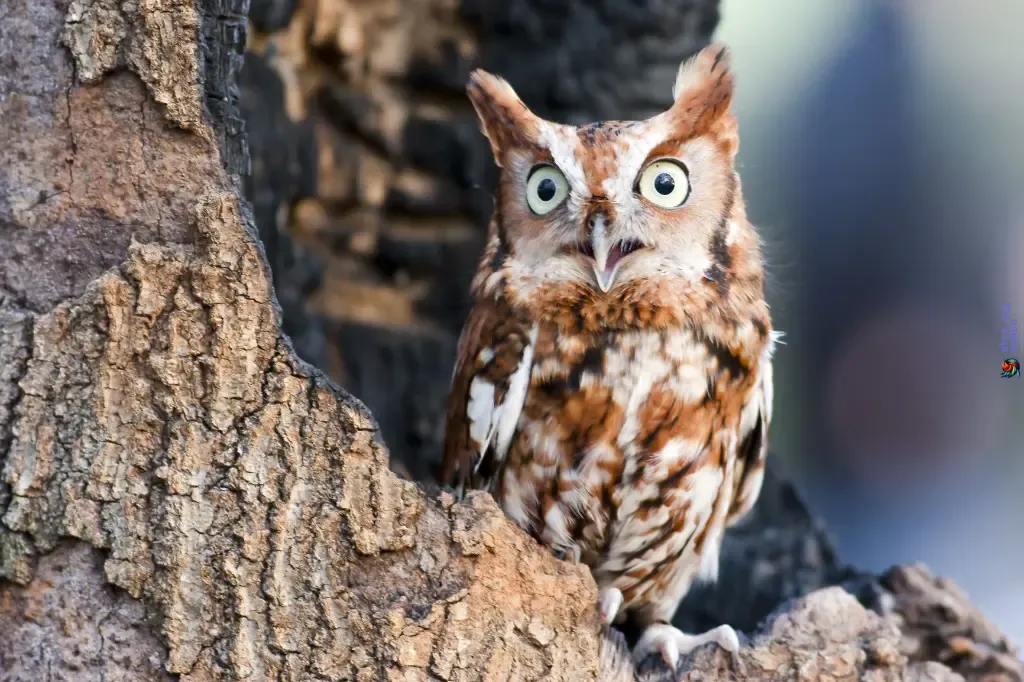
Eastern Screech-Owl
The Eastern Screech-Owl is a small owl species found in North America.
Despite its name, it is not known for its screeching calls, but rather for its soft, melodic trills.
These owls have remarkable camouflage skills, blending seamlessly into their surroundings. Eastern Screech-Owls mainly feed on insects, small birds, and rodents.
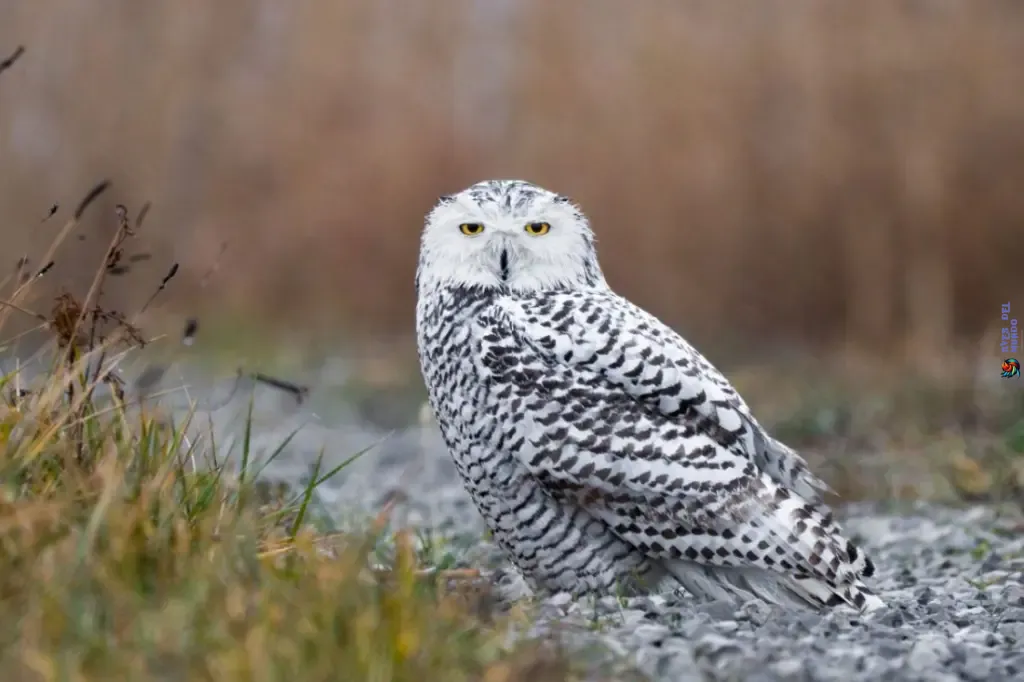
Snowy Owl
The Snowy Owl is one of the most recognizable owl species, with its stunning pure white plumage. Native to the Arctic regions, Snowy Owls have adapted to the harsh conditions of their habitat.
They are exceptional hunters, preying on lemmings and other small mammals. Unlike many other owl species, Snowy Owls are diurnal, meaning they are active during the day.
Understanding the behavior and characteristics of different owl species allows us to appreciate their unique adaptations and provide the necessary support for their well-being. By actively caring for owl families and their owlets, we play a vital role in preserving these magnificent birds for future generations.
«Owls come in various species, each with its own unique behavior and characteristics.»
| Owl Species | Distinct Features | Primary Prey |
|---|---|---|
| Great Horned Owl | Ear tufts, large yellow eyes | Small mammals, birds, skunks |
| Barn Owl | Heart-shaped face, pale plumage | Rodents |
| Eastern Screech-Owl | Camouflaged plumage | Insects, small birds, rodents |
| Snowy Owl | Pure white plumage | Lemmings, small mammals |
*Note: The table above provides a summary of the distinct features and primary prey of select owl species.
The Importance of Owl Habitats
Owls are fascinating creatures that rely on their habitats for survival. Preserving and protecting owl habitats is paramount for the conservation of owl species, including the well-being of owlets. These habitats serve as crucial ecosystems that provide owls with food, shelter, and suitable breeding grounds. Understanding the significance of owl habitats is essential for anyone passionate about owl conservation.
The Role of Owl Habitats in Owlet Survival
Owlets, the adorable and vulnerable baby owls, depend on their habitats for their growth and development. The availability of suitable habitats directly affects their chances of survival. Owl habitats offer abundant prey for owlets to feed on, ensuring they receive the necessary nutrition for healthy development. These habitats also provide ample places to roost and seek protection from predators.
Preserving owl habitats is crucial for the continuation of owl species. By protecting their habitats, we create a safe and sustainable environment for owlets to thrive.
Various Types of Habitats Owls Rely On
Owls have adapted to different types of habitats across the world. Each owl species has its preferred environment, depending on factors such as climate, vegetation, and prey availability. Common owl habitats include:
- Forests and woodlands: Many owl species, such as the Eastern Screech-Owl and the Barred Owl, inhabit dense forests and woodlands, where they find suitable nesting sites and prey.
- Grasslands and prairies: Short-eared Owls and Burrowing Owls are often found in grassland habitats, where they feed on small mammals and insects that thrive in these open spaces.
- Wetlands and marshes: The Great Horned Owl and the Barn Owl can be found in wetland habitats, taking advantage of the abundant small mammals, birds, and amphibians that inhabit these areas.
- Deserts and arid regions: The Elf Owl and the Burrowing Owl have adapted to desert environments, relying on cacti, trees, or burrows for nesting and hunting.
Safeguarding Owl Habitats: Actions You Can Take
Protecting owl habitats is a collective responsibility that requires our attention and action. Here are some steps you can take to safeguard owl habitats:
- Support conservation organizations: Contribute to organizations dedicated to owl conservation, which work tirelessly to protect and restore owl habitats.
- Advocate for habitat preservation: Raise awareness about the importance of preserving owl habitats among your community and participate in campaigns or initiatives that promote habitat protection.
- Plant native vegetation: Create bird-friendly gardens by planting native trees, shrubs, and flowers that attract owls and their prey.
- Reduce pesticide use: Limit the use of pesticides in your garden and advocate for pesticide-free practices to protect owls’ food sources.
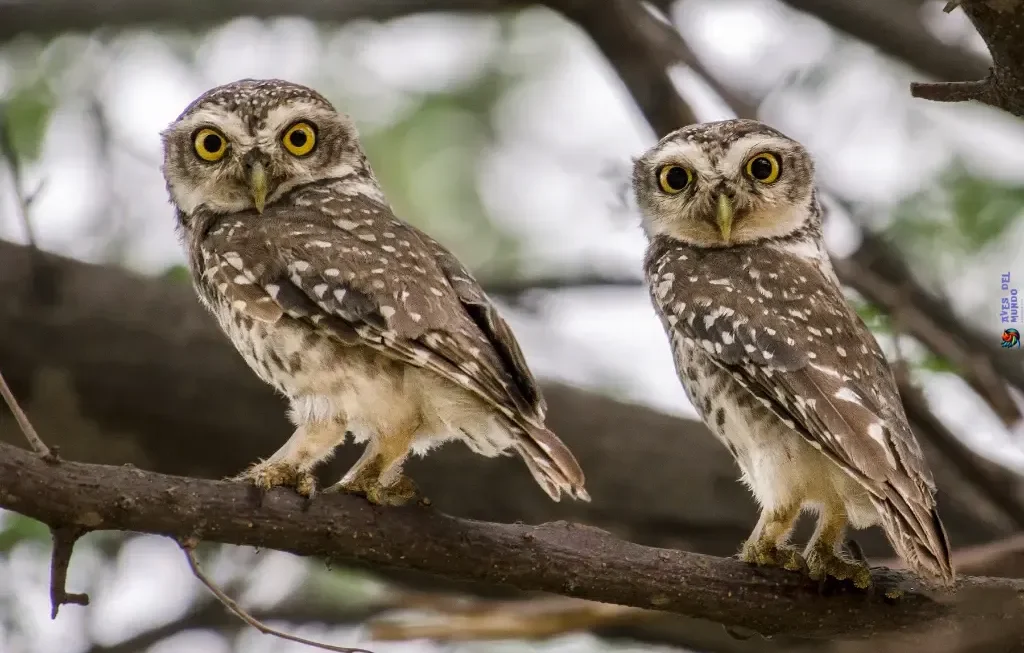
Identifying and Monitoring Owl Nests
Owl nests are essential for the growth and development of owlets, providing them with a safe haven as they navigate their early stages of life. In this section, you will learn how to identify these nests and effectively monitor them without causing any disturbances to the owl family.
Identifying Owl Nests
Spotting an owl nest may require some keen observation skills, as they are often well hidden and disguised among their surroundings. Keep an eye out for the following signs:
- Large bird-like structures, constructed using twigs, leaves, feathers, and other natural materials.
- Nesting locations in tree cavities, dense foliage, or abandoned nests of other birds.
- Distinctive owl pellets scattered around the nest area—these are compacted masses of indigestible items that owls regurgitate.
- Frequent sightings of adult owls near a particular area, indicating their nesting spot.
Monitoring Best Practices
Once you have located an owl nest, it’s crucial to monitor them responsibly and respectfully. Here are some best practices to follow:
- Maintain a safe distance: Use binoculars or a spotting scope to observe the nest from a distance that does not disturb the owls.
- Stay quiet and low-key: Avoid making unnecessary noise or sudden movements that could startle the owlets or adult owls.
- Observe without interference: Do not touch or disturb the nest or its surroundings, as it may cause stress or abandonment.
- Document from a distance: If you wish to capture photos or videos of the owlets, use a telephoto lens to maintain a safe distance.
Ensuring the Safety of the Owl Family
While monitoring owl nests is an exciting experience, it’s vital to prioritize the safety and well-being of the owl family. Here are some tips:
«By respecting their habitat and keeping a respectful distance, you can play a crucial role in ensuring the owlets and their parents remain undisturbed and thrive.»
| Do’s | Don’ts |
|---|---|
|
|
By following these guidelines, you can enjoy the beauty of owl nests and play an active role in protecting the owl family and their natural habitat.
Providing Adequate Food and Nutrition
Proper nutrition is essential for the healthy growth and development of owlets. To ensure their well-being, it’s crucial to understand the dietary needs of baby owls and provide them with a balanced diet. Here are some insights and tips to help you offer the right food options and maintain the overall nutritional health of owlets.

Types of Foods Owlets Rely On
Owlets have specific dietary requirements that vary depending on their age and species. A typical owl diet consists of:
- Small rodents like mice, voles, and rats
- Insects and worms
- Occasionally, small birds or amphibians
It’s important to note that different owl species may have specific dietary preferences. Research about the specific species of owlets you are caring for to ensure you provide appropriate food options.
Providing a Balanced Diet
Offering a balanced diet is crucial for the overall health of owlets. A well-rounded diet ensures that they receive the necessary vitamins and minerals for proper growth. Here are some tips to create a balanced diet:
- Include a variety of prey items to mimic their natural diet
- Ensure the food is fresh, free from pesticides or contaminants
- Consider providing supplements if recommended by a wildlife expert or veterinarian
Consult with a wildlife expert or veterinarian to determine the specific dietary needs of the owl species you are caring for and develop a feeding plan accordingly.
Feeding Tips for Owlets
Feeding owlets requires careful consideration to ensure their safety and health. Here are some additional tips:
- Feed owlets small portions multiple times a day to mimic their natural feeding patterns
- Offer food at appropriate temperatures for their comfort
- Observe owlets during feeding to ensure they are eating and digesting properly
Remember, it’s crucial to strike a balance between providing the necessary nutrition and allowing owlets to develop their hunting skills. Once they are capable, gradually introduce live prey to encourage their instinctual hunting behaviors.
By understanding the dietary needs of owlets and providing a balanced diet, you contribute to their overall well-being and successful development.
Promoting Owlet Safety and Protection
Owlets, the young offspring of owl families, are particularly vulnerable to threats in their environment. As caretakers, it is our responsibility to prioritize their safety and protection. By understanding and addressing potential hazards, we can create a secure space for owlets to grow and thrive. This section will provide essential safety measures and actionable steps you can take to safeguard owlets and their families.
Identifying Potential Hazards
- Predators: Various predators, such as larger birds and mammals, pose a significant threat to owlets. Ensure the nesting area is inaccessible to potential predators by using deterrents or choosing a secure location.
- Human Interference: Human activities can disrupt owl families and endanger owlets. Respect their natural habitat and maintain a safe distance to avoid causing unnecessary stress or disturbance.
- Habitat Destruction: Destruction of owl habitats leads to displacement and threatens the survival of owl families. Support owl conservation efforts and advocate for the protection of their habitats.
Creating a Safe Space
To promote the safety and well-being of owlets:
- Protect the Nest: Shield owl nests from potential hazards and disturbances. Use natural camouflage techniques to conceal the nest and ensure it blends into the surroundings.
- Educate Others: Raise awareness among your community about the importance of owl conservation and the need to protect owl families. Encourage responsible behavior around owl habitats and nests.
- Monitoring and Intervention: Regularly monitor the nest and surrounding area for any signs of distress or danger. If necessary, seek professional intervention or assistance from local wildlife organizations.
By taking these safety measures and actively participating in owl conservation, we can contribute to the well-being and survival of owlets and their families.
Monitoring Owlet Development
Tracking the development of owlets is crucial in ensuring their well-being. By closely observing their growth milestones, you can provide the necessary support and care for these adorable baby owls as they navigate their journey to maturity. In this section, we will guide you through the stages of owlet development, from their feather development to the refinement of their hunting skills and flight capabilities. Gain valuable insights and learn how to nurture their growth every step of the way.
One of the significant milestones in owlet development is their feather development. Just like human babies, owlets go through a stage where their fluffy down feathers are gradually replaced by adult feathers. This process, known as fledging, marks a crucial transition in their lives, enabling them to regulate their body temperature and take flight.
Did You Know? The adorable appearance of owlets is often enhanced by their fluffy down feathers, which serve to insulate and protect them during their early stages of life.
As owlets grow, they also develop their hunting skills. Initially, they rely on their parents to provide food, but as they mature, they start learning the art of hunting. Observing owlets’ hunting behaviors, such as their ability to locate prey and execute successful hunting strategies, is a delightful sight to behold as they gain independence.
Stages of Owlet Development
Understanding the different stages of owlet development will help you track their progress and provide appropriate care and support along the way. Below, we outline the key stages of owlet development:
- Hatching: Owlets emerge from their eggs and are completely dependent on their parents for food, warmth, and protection.
- Feather Development: Fluffy down feathers are gradually replaced by adult feathers, contributing to their ability to control body temperature and prepare for flight.
- Early Hunting Skills: Owlets start to observe their parents and learn basic hunting techniques, such as pouncing and grabbing prey.
- Advanced Hunting Skills: As they mature, owlets become more proficient hunters, refining their techniques and improving their success rate.
- Flight Practice: Practicing their flight abilities is an essential part of owlet development. Initially, their flights are short and unsteady, but with time and practice, they gain confidence and agility in the air.
- Independence: Owlets reach a stage where they become independent and venture out on their own, leaving the nest to establish their territories and find mates.
Tips for Supporting Owlet Development
To ensure the healthy development of owlets, it is important to provide them with a nurturing environment that allows for their natural growth and instincts to flourish. Here are some tips to support owlet development:
- Create a safe and secure nesting area for owlets, ensuring it is sheltered from potential threats.
- Offer a diverse diet that includes a variety of prey to promote optimal nutrition and development.
- Encourage natural hunting behavior by providing opportunities for owlets to practice their hunting skills in a controlled environment.
- Minimize human intervention and disturbance near the nest to allow owlets to develop without unnecessary stress.
- Provide options for perching and roosting to help owlets strengthen their flight muscles and gain confidence in their abilities.
By monitoring owlet development and implementing these tips, you can contribute to their healthy growth and prepare them for a successful journey into adulthood. Remember, every owlet is unique, so be patient as they navigate their own developmental timeline.
Promoting Natural Owlet Behavior
Owlets display a range of natural behaviors that are essential for their survival and successful adaptation to their environment. Understanding and promoting these behaviors is vital for the well-being of these baby owls. By creating an environment that encourages their instinctual behavior, you can contribute to their development and overall growth.
Promoting Natural Hunting Skills
One of the key behaviors that owlets develop is hunting. Hunting skills are crucial for their ability to find food and sustain themselves. To promote natural hunting skills in owlets:
- Provide opportunities for owlets to observe their parent(s) hunting prey. Their observation and mimicry of hunting techniques will facilitate their own development.
- Offer a variety of prey items that mimic the natural diet of the owl species. This helps them practice hunting techniques specific to their species.
- Create a safe space with appropriate perching and hiding spots, simulating the natural hunting environment, where owlets can practice their hunting skills.
Encouraging Communication Behavior
Communication is crucial for owlets to establish and maintain social bonds with their family members. It also plays a role in courtship and territory defense as they mature. To encourage communication behavior among owlets:
- Provide opportunities for owlets to interact with their siblings and parents. This can be achieved by creating platforms, branches, or perches where they can gather and communicate.
- Play owl vocalizations or use recordings to stimulate vocal responses from owlets. This helps them develop their own vocal abilities and establish their unique communication patterns.
- Observe and respect the natural communication dynamics of the owl family. Avoid excessive disruptions that may interfere with their communication and bonding processes.
Nurturing Social Behavior Among Owlets
Owlets, like many other birds, exhibit social behaviors within their family unit. These behaviors contribute to their overall well-being and help them learn essential skills. To nurture social behavior among owlets:
- Create a safe and spacious nesting site that allows enough room for all members of the owl family to coexist comfortably.
- Encourage cooperative activities, such as preening and allopreening, by providing appropriate perches and surfaces where owlets can groom themselves and each other.
- Observe and respect the hierarchy established within the owl family, as some owlets may exhibit dominance over others. Avoid separating siblings unnecessarily, allowing them to practice crucial social dynamics.
| Behavior | Importance |
|---|---|
| Hunting | Develops essential skills for finding food and survival. |
| Communication | Establishes social bonds and plays a role in future reproductive behavior. |
| Social Behavior | Contributes to overall well-being and cooperative activities. |

Engaging in Owl Conservation Efforts
Conserving owl populations and habitats is essential for the long-term survival of these majestic birds. By actively participating in owl conservation efforts, you play a crucial role in protecting these remarkable creatures. There are various ways in which you can contribute to owl conservation and ensure a brighter future for owl species and owlets.
Supporting Organizations and Initiatives
One impactful way to get involved in owl conservation is by supporting organizations and initiatives dedicated to the cause. These organizations work tirelessly to promote owl conservation, raise awareness, and implement measures to protect owl habitats. By donating to these organizations or volunteering your time, you directly contribute to their efforts and help make a difference in owl conservation.
Spreading Awareness
Educating others about the importance of owl conservation is a powerful way to make a lasting impact. Use your voice to spread awareness about owl species, their habitats, and the challenges they face. Engage in conversations with friends, family, and community members, highlighting the significance of conserving owl populations and the role owlets play in maintaining a healthy ecosystem. Through your advocacy, you can inspire others to take action and join the conservation movement.
«Conservation is a state of harmony between men and land.»
– Aldo Leopold
Creating Suitable Owl Habitats
One practical way to contribute to owl conservation is by creating suitable habitats for owls. Owls require specific environments to thrive, including ample nesting sites, access to prey, and minimal disruptions. Consider implementing owl-friendly practices in your own backyard or community, such as keeping dead trees for potential nest sites or minimizing the use of harmful pesticides that can affect owl prey populations. Small changes can have a substantial positive impact on owl habitats and the owlets that rely on them.
Participating in Citizen Science Projects
Citizen science projects provide a unique opportunity to actively contribute to owl conservation efforts while expanding your knowledge about these amazing birds. Participate in programs that involve monitoring owl populations, recording breeding behaviors, or tracking migration patterns. By collecting valuable data through citizen science initiatives, you assist scientists and researchers in understanding owl species better and developing effective conservation strategies.
Becoming an Advocate for Owl Conservation
As an advocate for owl conservation, you can take a stand and influence policies and practices that impact owl populations. Write letters to local authorities, lawmakers, and environmental organizations expressing the importance of protecting owl habitats and implementing measures to ensure their long-term viability. Join conservation groups and actively participate in discussions and initiatives that focus on owl welfare and conservation. Your advocacy efforts can contribute to positive change and a brighter future for owlets and owl species.
Educating Others about Owlets and Owl Conservation
Spreading awareness about owlets and owl conservation is crucial in protecting these magnificent creatures and their habitats. By educating others, you can inspire action and make a significant impact in preserving owl populations for future generations to enjoy.
Share Knowledge within Your Community
One effective way to educate others about owlets and owl conservation is by sharing your knowledge within your community. Organize informative workshops or talks where you can discuss the importance of protecting owls and their habitats. Engage with local nature centers, schools, and community organizations to raise awareness about owl conservation efforts.
Utilize Social Media Platforms
Social media platforms provide a powerful tool for increasing awareness about owlets and owl conservation on a broader scale. Create engaging and informative posts highlighting the fascinating lives of owlets, their conservation needs, and the importance of owl habitats. Encourage others to share this information to reach a wider audience and spark conversations about owl conservation.
Support Owl Conservation Organizations
Many organizations dedicate their efforts to owl conservation. By supporting these organizations, you contribute to their ongoing work in protecting owls and their habitats. Consider donating to owl conservation initiatives, volunteering your time, or participating in fundraising events. Together, we can make a significant impact on owl conservation efforts.
«Education is the most powerful weapon which you can use to change the world.» – Nelson Mandela
Organize Local Events and Campaigns
Take an active role in your community by organizing local events and campaigns centered around owlets and owl conservation. This could include owl-themed art exhibits, photography competitions, film screenings, or guided owl-watching tours. Through these initiatives, you create opportunities for people to connect with owlets and deepen their appreciation for these remarkable birds.
Collaborate with Schools and Educational Institutions
Reach out to schools and educational institutions to collaborate on projects that promote owl conservation. Offer to deliver presentations, organize field trips to owl habitats, or engage students in hands-on activities that raise awareness about owlets. By integrating owl conservation into the curriculum, you foster a sense of responsibility and inspire the next generation of owl advocates.
Remember, every effort to educate others about owlets and owl conservation contributes to the collective goal of preserving these incredible birds and their habitats. Together, let’s ensure a future where owlets continue to grace our skies and inspire awe in all who encounter them.
The Reward of Observing Owlets Thrive
There is something truly magical about witnessing the growth and development of owlets in their natural habitat. As you observe these baby owls flourish into majestic creatures, you can’t help but feel a sense of joy and fulfillment. Whether you’re a bird enthusiast or simply an appreciator of nature’s wonders, the experience of seeing an owl family thrive is truly rewarding.
From the moment these adorable baby owls hatch, you become captivated by their charm and innocence. Watching them progress from downy, wide-eyed fluffballs to confident and graceful hunters is nothing short of awe-inspiring. It’s a testament to the resilience and beauty of nature.
As you continue to observe the owl family, you become more connected to their world and understand the impact we can have on their well-being. Every effort we make to protect their habitats, conserve owl species, and ensure their safety contributes to their continued growth and survival. By becoming an advocate for owlets and owl conservation, you play an essential role in their journey.


